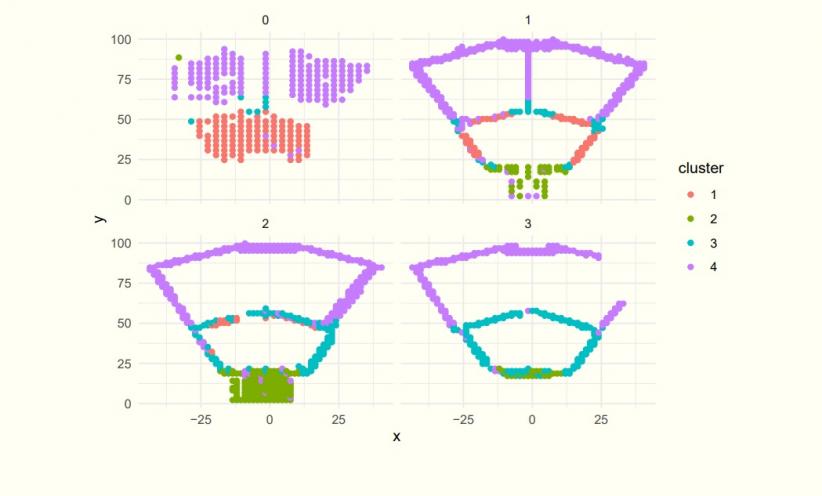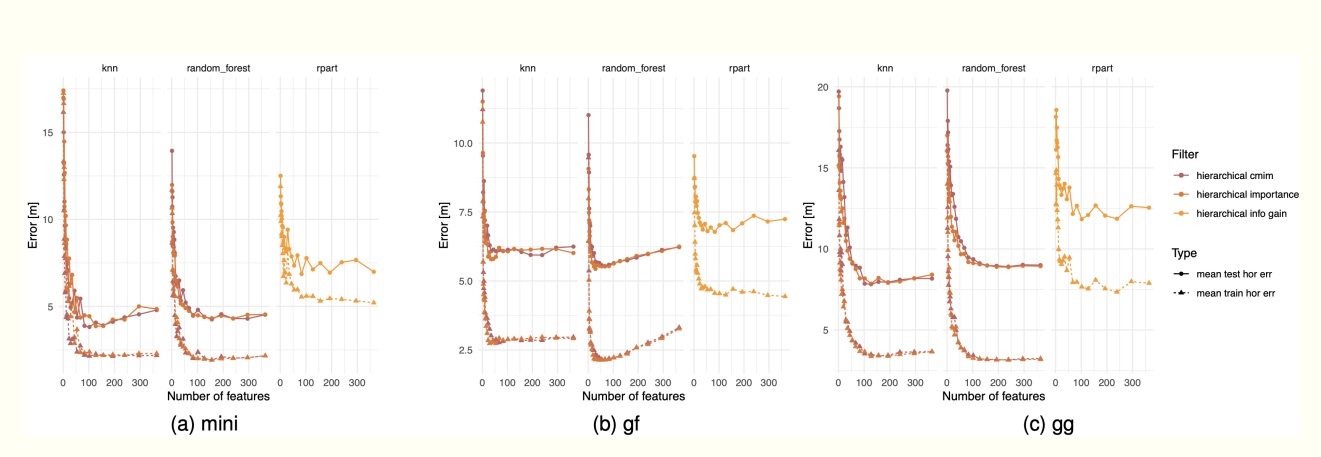Automatic feature selection in intrabuilding localising
Scientists at WUT are working on improving the service of intrabuilding localising. The solution is increasingly utilised in the care for people suffering from dementia or navigation of automatic robots, among other things.

Separate selection of points inside corridors and the Small Auditorium in the WUT Main Building. By utilising this approach, you can determine an approximate distance of the localised object, with an error lower than five meters.
Due to their low implementation cost and easy use resulting from the system based on the already existing structure of wireless access points, the services of intrabuilding localising are universally applied. Such systems are often trained with the fingerprinting method.
“When you are in a particular spot in a building, you collect information about the strength of signals coming from access points. The nearer you are to a point, the stronger the signal. This is fingerprinting, characteristics of a given place,” explains Marcin Luckner, DSc, from the Faculty of Mathematics and Information Science at the Warsaw University of Technology.
In systems based on fingerprinting method, the quality of localising is influenced by the stability of received signals. However, stability fluctuates because of the presence of mobile access points such as mobile phones belonging to anyone who is near a given location.
“The signal strength changes in time. This happens because people migrate, and new signal reflections appear, among other things. If the situation were stable, we could localise people with an accuracy up to one metre,” says Marcin Luckner, DSc.
Can anything be done about it? Yes, and our researchers are working on it, aiming their actions at creating a universal solution that will reduce the signal features, both for the location on one plane and in a multi-story building.
“We are not creating anything new. We are working on enhancing the effectiveness of the already existing system,” stresses Dr Luckner. “We are looking for specific methods. We are considering the automatic division of a building into certain parts, the so-called clusters. The system would select which signals should be used in localising within such a cluster,” says the scientist.
The devised methods act based on three types of estimators: individual estimators, modeling individual features of such signals as aggregates of power source calculated based on multiple measurements; environmental estimators, modeling the interaction of signals with a supervised area by calculating the measurement points in which the signal from the source was detected; correlation estimators defining to what extent a given source can be replaced with a comparative analysis of the signal strength read in the same points for different sources.
Estimators are used in selection methods to choose a stable source of signals and eliminate the source whose features may diminish the quality of localising. To check the effects of the devised methods, Marcin Luckner, DSc, and his research team are conducting tests on the measurement data collected in public areas of three WUT buildings: the Main Building, Physics Building, and the building of the Faculty of Mathematics and Information Science.
“We have detected over seven hundred points in the Main Building and four hundred points in the Physics Building. So many access points do not exist in these buildings. After confirming their validity, we selected about one hundred points per building, thinking this number is sufficient for localising with satisfactory precision,” explains Dr Luckner.
Currently, the team headed by Marcin Luckner, DSc, continues its work on improving the already existing algorithms. “We aim to create autonomous algorithms which could diagnose errors in measurement data, e.g. report to the operator the part of the infrastructure that is not working. Adding new features to a localiser, instead of building it from scratch, is something you can constantly do,” adds the scientist.
-
The project "Automatic feature selection in indoor positioning systems” is funded as part of the research grant Research Centre POB Artificial Intelligence and Robotics of the Excellence Initiative – Research University Programme implemented at the Warsaw University of Technology.
Research team:
Marcin Luckner, DSc; Sebastian Sowik, MSc; Professor Peter Brida (University of Zilina)


